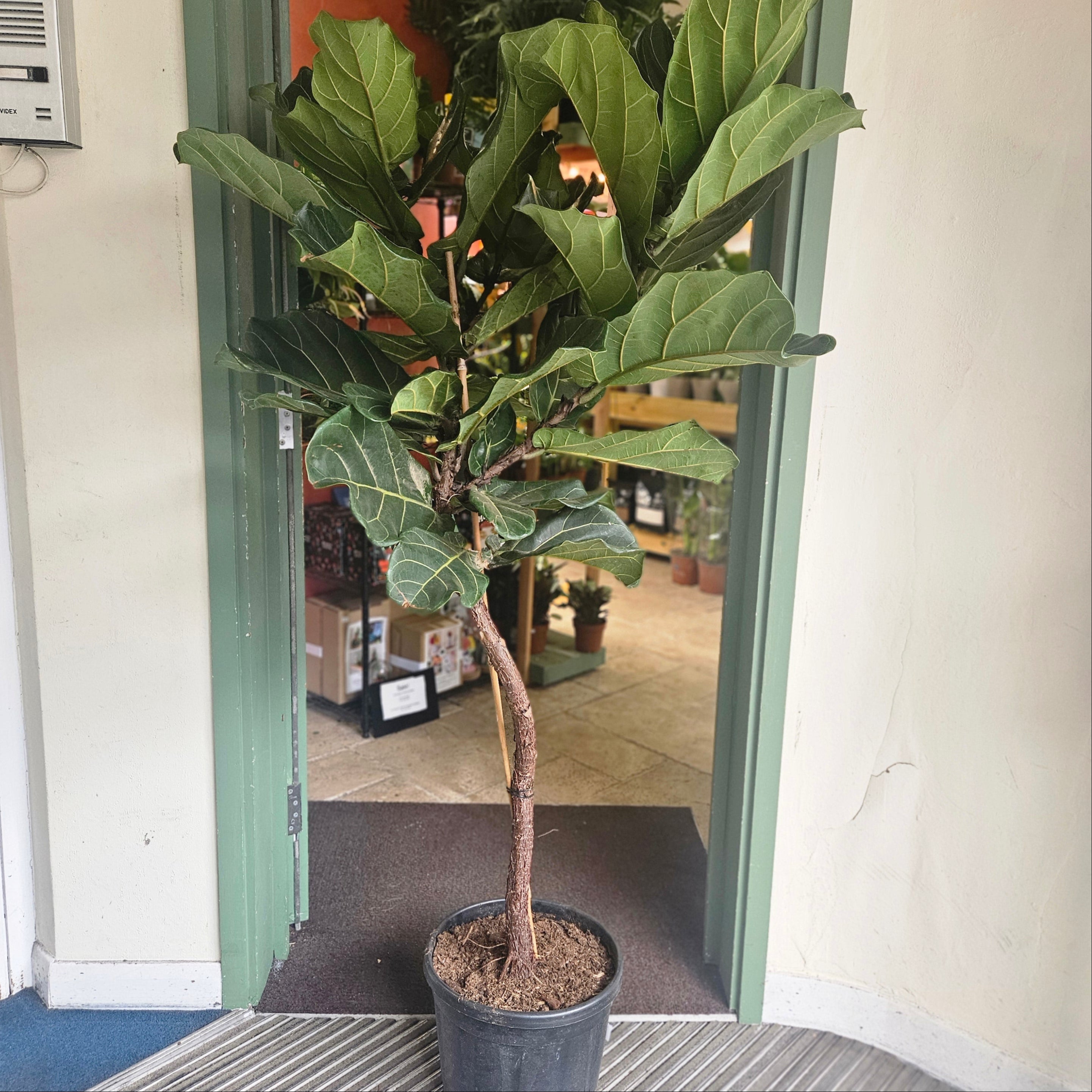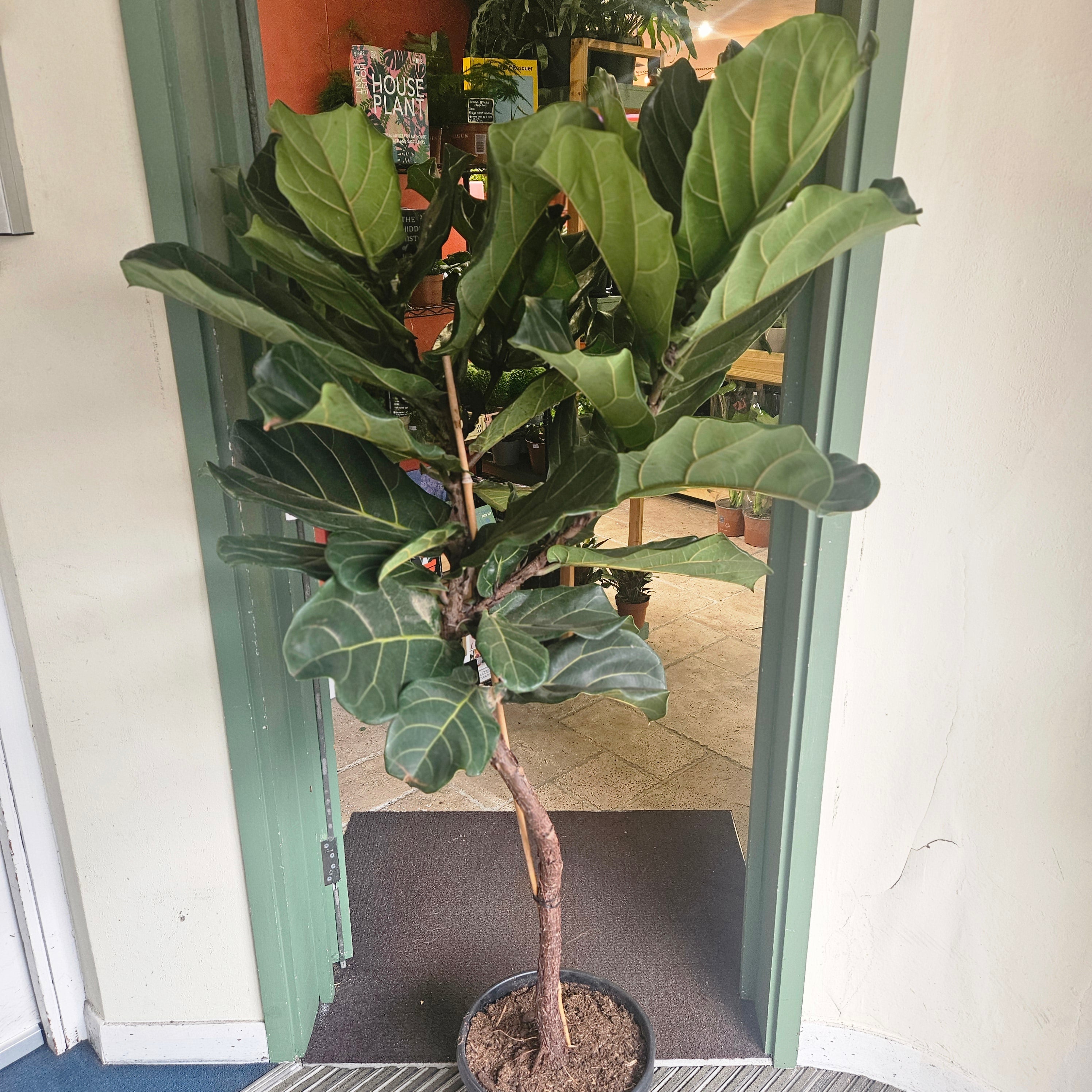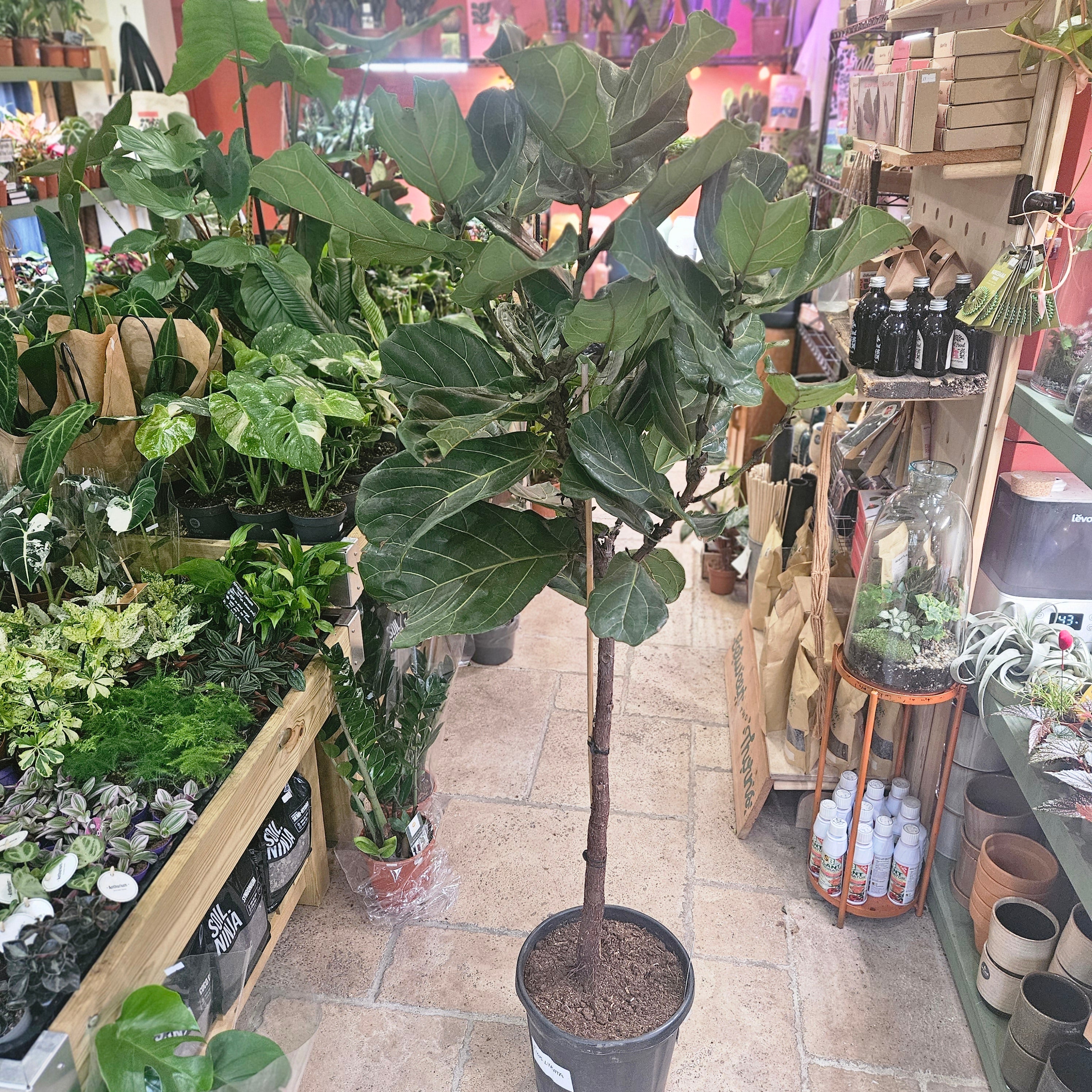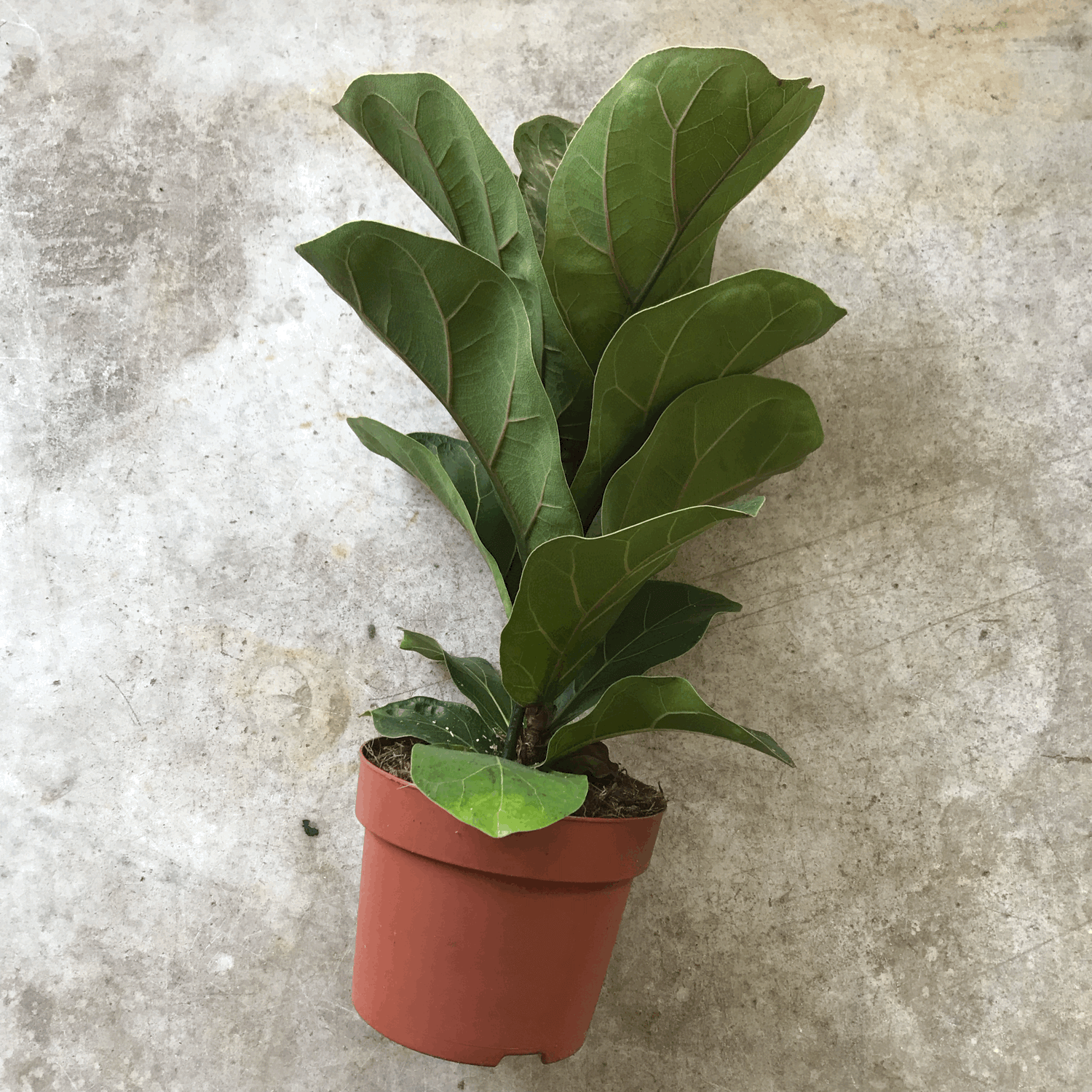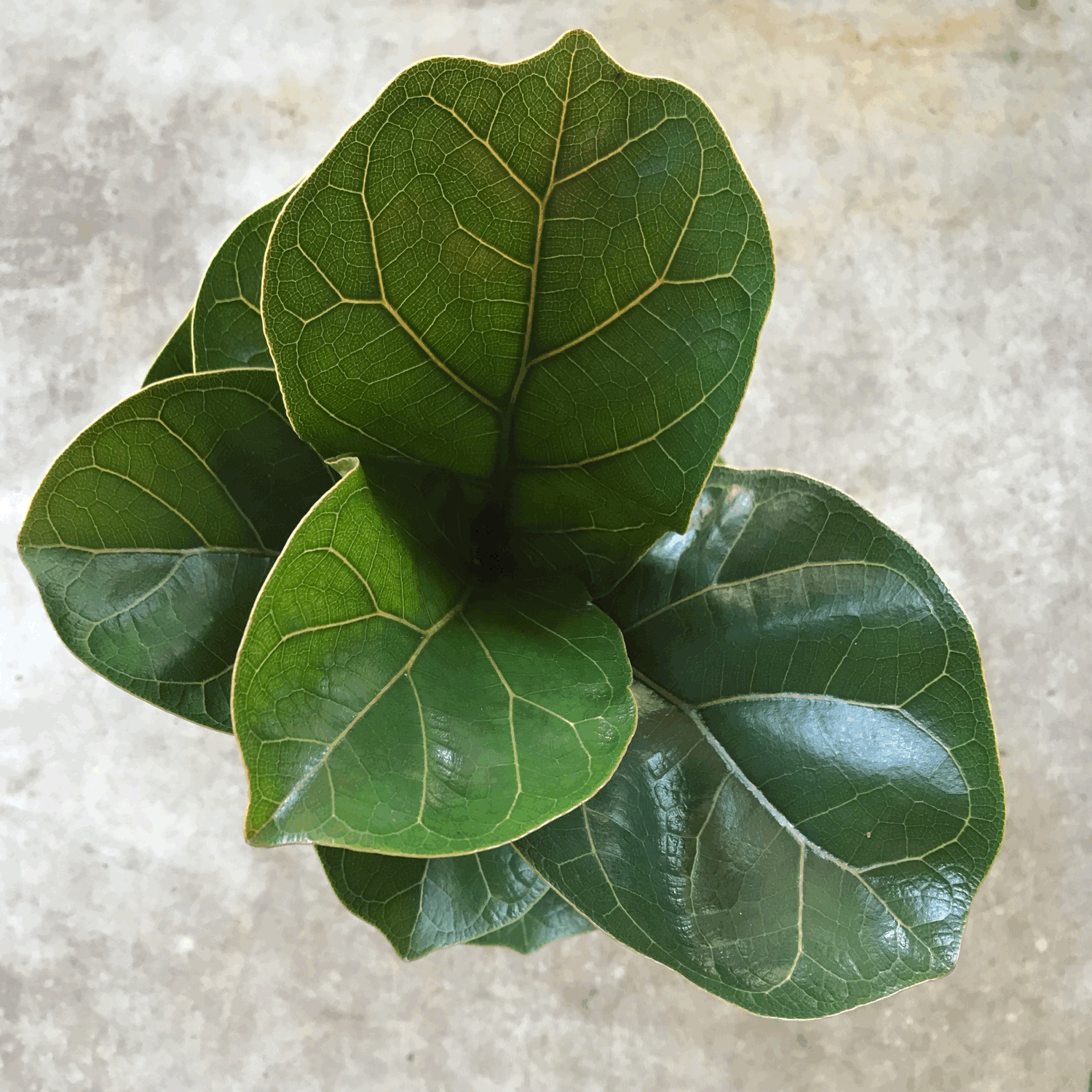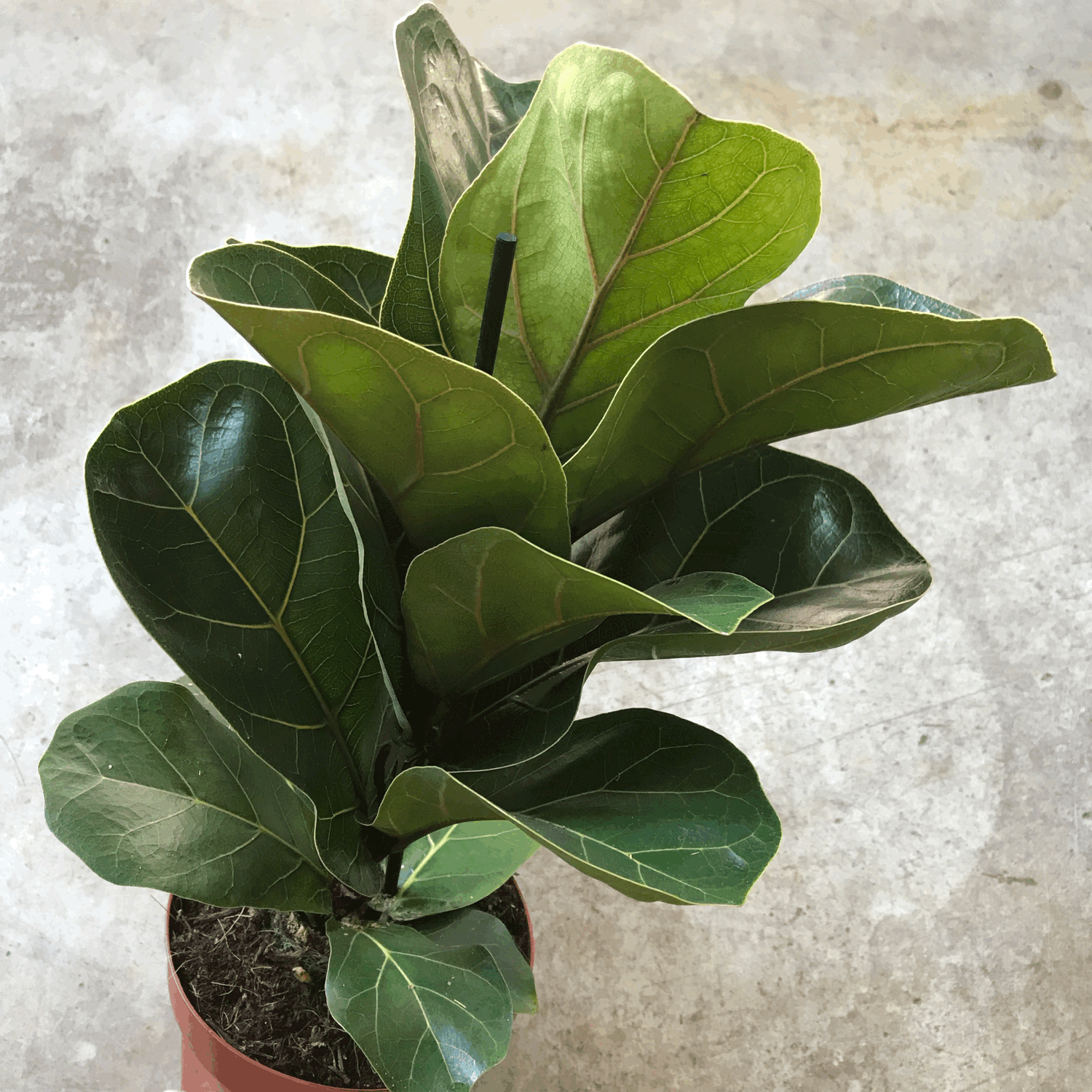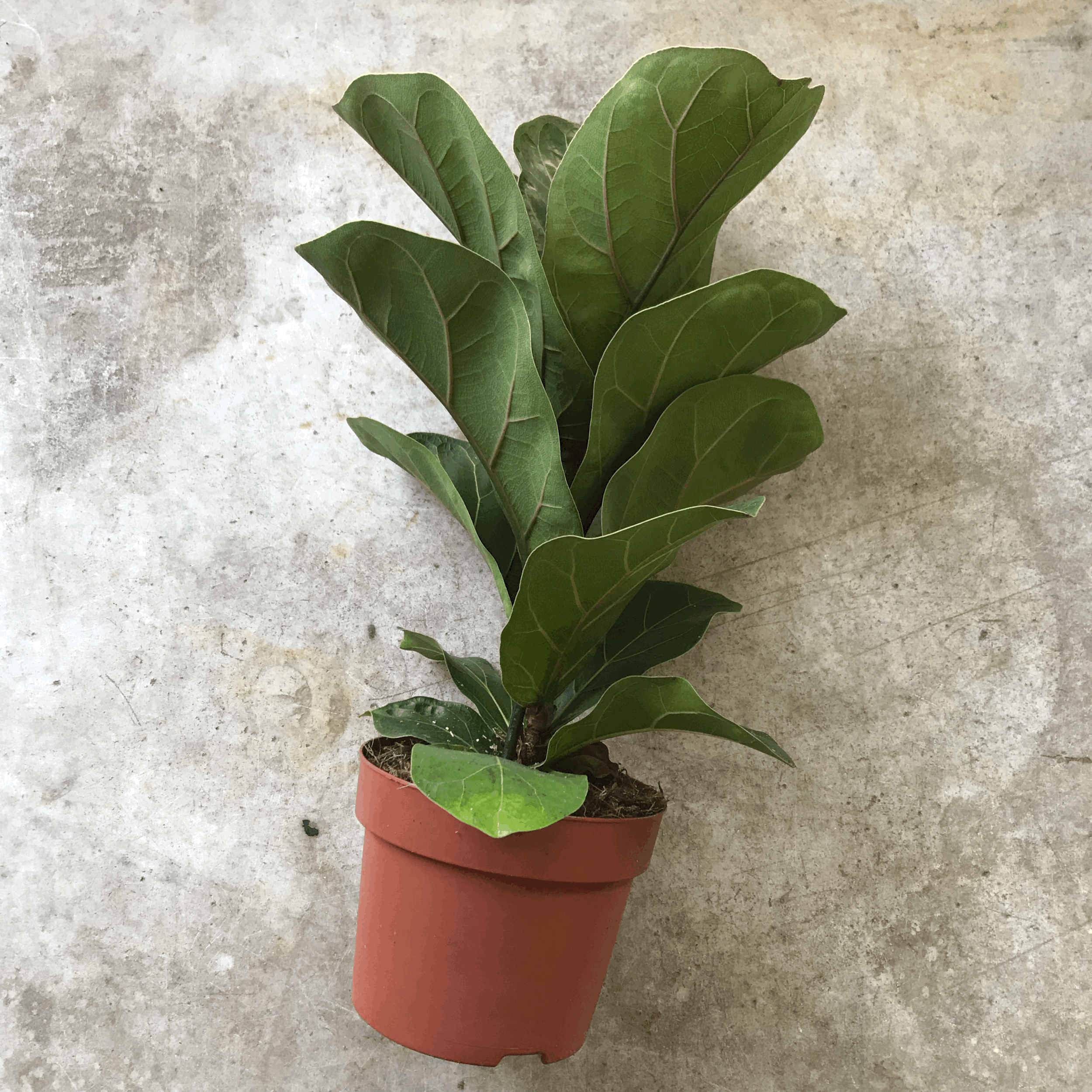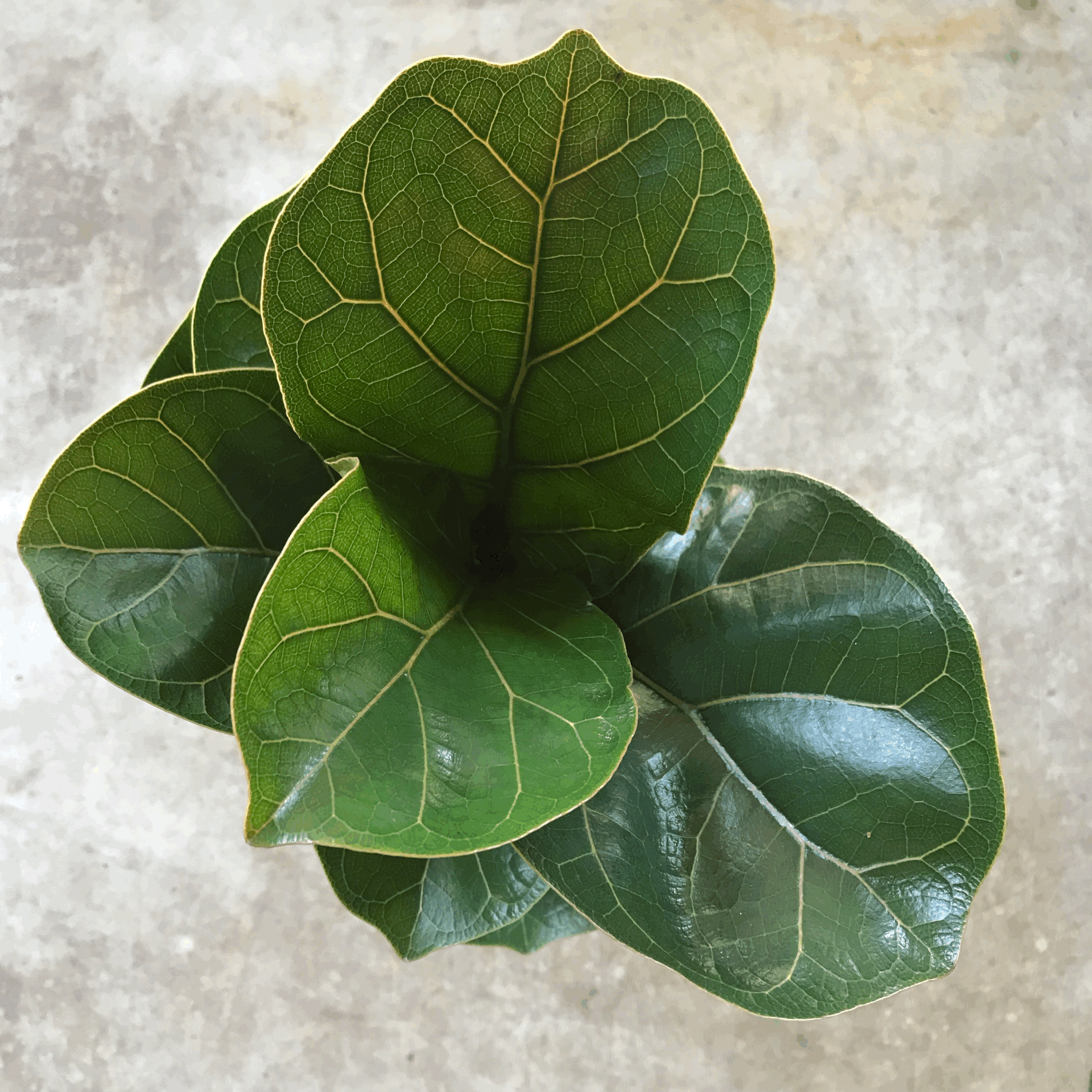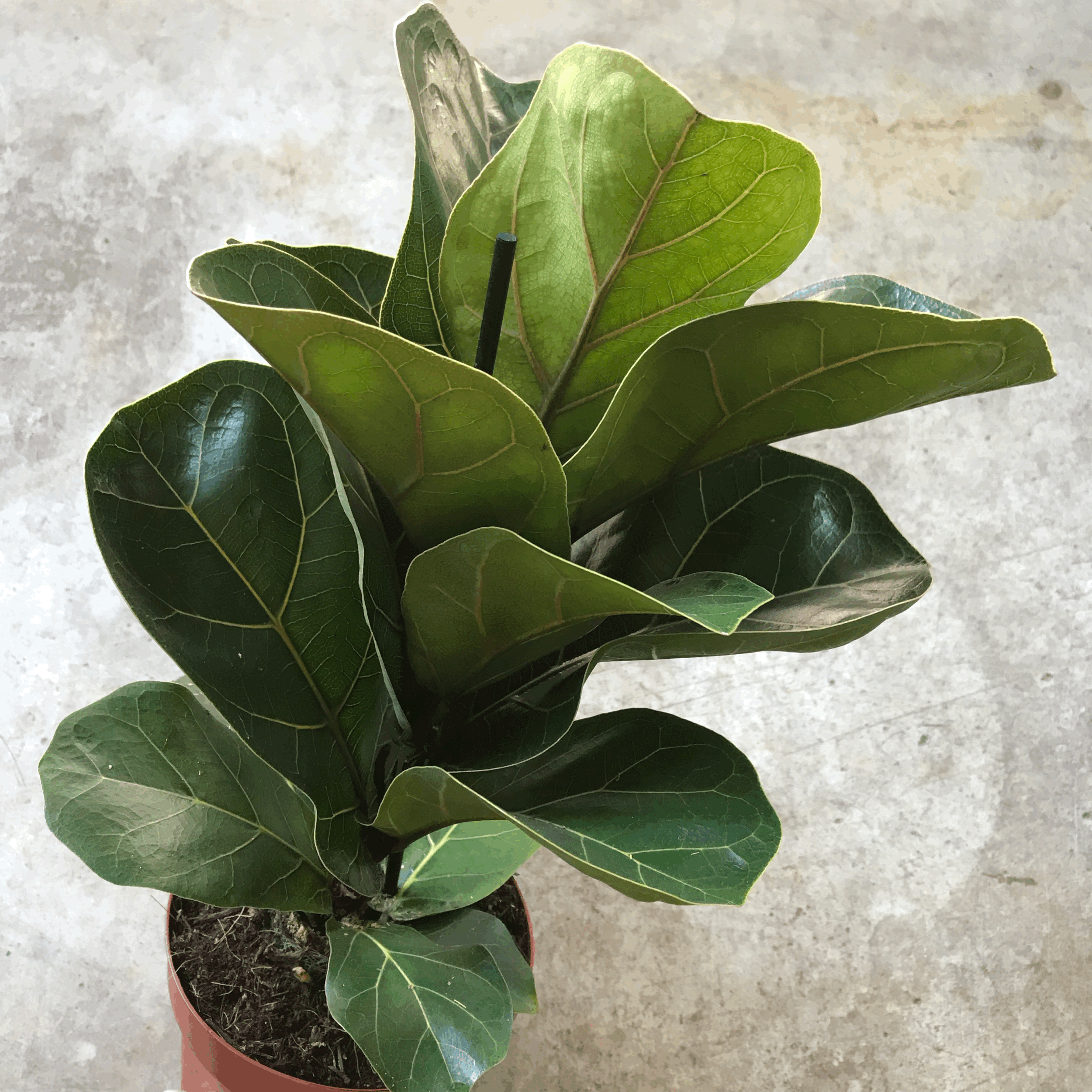Fiddle Leaf Fig Plant Overview
Fiddle Leaf Figs belong to the Moraceae family which typically grow in tropical regions of the world with the ability to produce mulberrys and figs. Native to West Africa, these plants are loved for their beautiful big leaves with woody stems that can grow to very large sizes. The Ficus Lyrata only naturally grows in western rainforests since this is the only place in the world that has the specific type of wasps needed to enable the plant's reproduction. Although Ficus lyrata is the most common variety to find there are also a few others to be aware of. Ficus lyrata Bambino is a smaller variety that will only grow a few feet. Ficus lyrata Compacta can grow up to 5 feet and has smaller leaves. Harder to find is the variegated version that has a mix of green and cream leaves. Ideally, as long as the room is brightly lit, the Fiddle Leaf Fig would be the perfect addition to any room in your house.
How to Look After a Ficus lyrata (Fiddle leaf fig)
Light:
For best results pop in a spot where it will receive bright but indirect light, away from radiators or draughts. Avoid direct sunlight as this can scorch the leaves. Tolerant of lower light levels the Ficus lyrata won't mind a slightly shadier spot, however this can impact its rate of growth or produce elongated stems.
Temperature and Humidity:
Fiddle leaf figs prefer temperatures between 15°C - 26°C. Avoid exposing them to extreme temperature fluctuations or cold drafts. Fiddle leaf figs also prefer high-humidity environments. Mist around the leaves occasionally or place a tray of pebbles with water beneath the plant to increase humidity levels or use a humidifier. Be mindful of drafts and avoid placing your Rubber plant near air-conditioning vents or heaters, as these can cause dryness and browning tips.
Watering:
Fiddle leaf fig plants do not like to be sitting in wet soil, let a third of the soil dry out before watering. Soil should feel dry if you push your finger into the soil. Watering should be reduced further in winter months to avoid root rot. Make sure to always use lukewarm water as fiddle leaf figs are rather sensitive to temperature changes and this could damage the roots. Overwatering is one of the biggest reasons for an unhealthy Fiddle leaf fig and can cause yellowing leaves and leaf drop.
Fertilising:
Fiddle leaf figs enjoy a feed every 4 weeks during the growing season (spring-summer). As a general rule don't feed in winter or just after a repot. Follow the instructions on the fertiliser packaging for proper application. We sell an organic pure seaweed extract that when diluted is a great feed for plants including Ficus lyrata.

How to Re-pot a Fiddle leaf fig
Ficus lyrata will only need a repot when they get too big for their current pot and roots are coming out the bottom generally every 2-3 years. It is best to give the plant water 24 hours before the re-pot to avoid transplant shock. Spring is the best time to repot, as the plant is actively growing, try to avoid repotting plants in winter. Choose a pot that is one or two sizes larger than the current one, ensuring it has drainage holes at the bottom. Carefully remove the Fiddle leaf fig from its current pot, gently loosening the root ball. Place it in the new pot and add fresh, well-draining potting mix around the roots. Gently press the soil to ensure the roots are bedded in. Avoid pressing too hard on the soil as this can cause it to compact. Water the plant thoroughly after repotting.
How to Propagate a Fiddle leaf fig
Propagating Rubber plants is an exciting way to grow new plants. Follow these steps:
- Choose a Healthy Stem: Select a stem with a few leaves . Make sure you use gloves as the Sap can be an irritant to skin.
- Cut the Stem: Use a clean, sharp knife or scissors to cut just below a node. Ensure your cutting is at least 12-18 inches long and strip back all leaves except one.
- Rooting: Place the cutting in water and pop in a warm and bright indirect spot. Roots should develop within a few weeks.
- Transplant: Once your cutting has well-established roots, transplant it into a pot with the appropriate soil mix.
How to Prune a Fiddle leaf fig
Pruning your Fiddle leaf fig helps maintain its shape and encourages healthy growth. Trim yellow or brown leaves or damaged leaves, as well as leggy stems. Make clean cuts just above a leaf node.
How to Take a Cutting from a Fiddle leaf fig
Taking cuttings for propagation follows a similar process as mentioned earlier. Ensure you choose a healthy stem, make a clean cut, and follow the propagation steps.
How Often Should I Water a Fiddle leaf fig
Watering frequency depends on various factors like humidity, temperature, and pot size. As a general rule, check the soil and water when a third of the soil is dry. Water less in winter and more frequently during the growing season. Plants in shadier locations will need less water then those in brighter spots.
Why Are My Fiddle leaf fig Leaves Going Yellow/Brown/Curling?
- Yellow Leaves: Yellowing leaves can result from overwatering, poor drainage, or too much direct sunlight. Adjust your watering and lighting conditions accordingly. If the leaves are wilting and yellowing it is most likely to be due to overwatering, check the roots for rot and re-pot if necessary.
- Brown Leaves: Brown edges or spots may indicate low humidity, underwatering, or direct sunlight. Increase humidity and adjust your watering routine. Too much warmth, for example, if the plant is next to a radiator, can cause brown leaves that dry up and fall off.
- Curling Leaves: Curling leaves can be a sign of underwatering, over-fertilization, or low humidity. Ensure proper watering and humidity levels.
How to Make a fiddle leaf fig Bushy
Encourage bushier growth by regularly pruning leggy stems, adding a bamboo cane can be used to help keep it upright. Ensure your fiddle leaf fig has enough light, lack of light can cause this plant to become leggy.
Are Fiddle leaf figs Poisonous to Cats and Dogs?
Yes, Fiddle leaf figs are toxic to humans and pets if ingested. Keep them out of
reach of children and pets to prevent accidental consumption. If ingested, seek medical attention immediately. The sap can also cause irritation to skin, make sure to wear gloves when handling.
With these expert tips, you're well-equipped to care for your Fiddle leaf fig! Happy growing!



